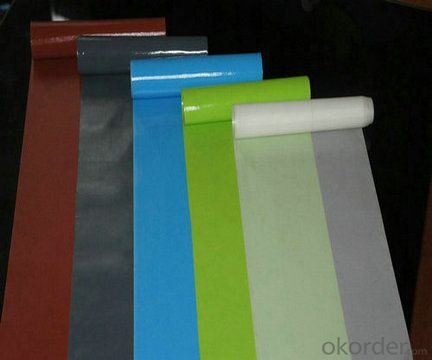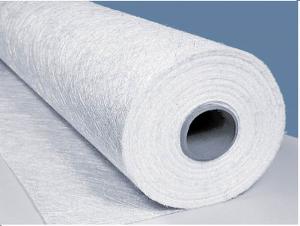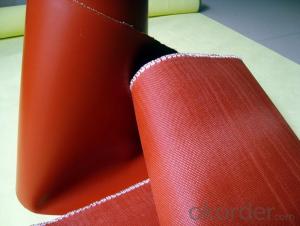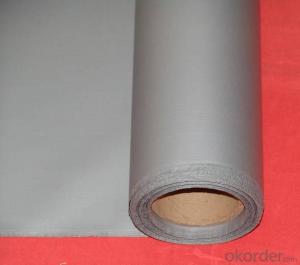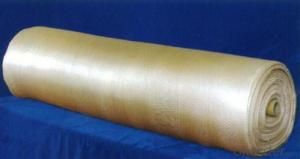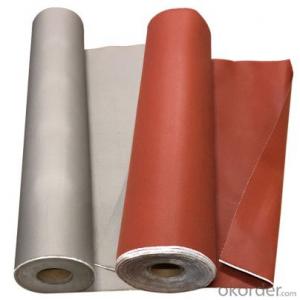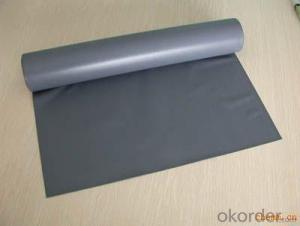Fiberglass Fabric with Silicone Coated 130gsm
- Loading Port:
- Shanghai
- Payment Terms:
- TT OR LC
- Min Order Qty:
- 500 m²
- Supply Capability:
- 50000 m²/month
OKorder Service Pledge
OKorder Financial Service
You Might Also Like
Fiberglass Fabric with Silicone Coated 130gsm
Fiberglass Fabric Description
Silicone coated fiberglass fabric is a fiberglass cloth, which possesses the properties of temperature resistance, anti-corrosion, high strength and is coated with organic silicone rubber.
Fiberglass Fabric Specification
Thickness:0.2mm-5mm
Width:100cm-150cm
Color;grey/red/silver/black
Weight(coating):130gsm-2800gsm
Model No | FSD2030 | FSD2030 | FSD2050 | FSD2100 | |
High temperature resistant(°C) | ≤280 | ≤280 | ≤280 | ≤280 | |
Low temperature resistant(°C) | ≥-40 | ≥-40 | ≥-40 | ≥-40 | |
Tensile intensity (N/50mm) | Warp | ≥1750 | ≥1750 | ≥2500 | ≥3500 |
Weft | ≥1280 | ≥1280 | ≥2100 | ≥3000 | |
Inflating burst intensity(Mpa) | ≥2.0 | ≥2.0 | ≥2.2 | ≥2.6 | |
Peeling intensity(N/m) | ≥450 | ≥450 | ≥520 | ≥600 | |
Insulation (kv/mm) | 16 | 16 | 18 | 18 | |
Weight (g/m*m) | 550-650 | 550-650 | 750-800 | 1500-1800 | |
Width(mm) | 1000±20 | 1000±20 | 1000±20 | 1000±20 | |
Thickness(mm) | 0.3-0.4 | 0.3-0.4 | 0.05-0.55 | 1.0-1.1 | |
color | Silver-gray, gray, red | lucency | Silver-gray, gray, red | Black, gray, red | |
Fiberglass Fabric Features:
1, Good performance on resisting high temperature and low temperature, -40°C-280°C;
2, High strength;
3, Ozone, oxide, light and weather aging resistance;
4, High insulation: dielectric constant:3-3.2, breakdown voltage: 20-50KV/MM;
5, Chemical corrosion resistant, oil-proofing, waterproofing (washable)
Fiberglass Fabric Application:
It has been widely used in construction, electric insulation,
chemical industry, pipeline ductile conjunction, large generating
Corrosion proofing field, machinery, metallurgy, sealing and so on.
Product Show
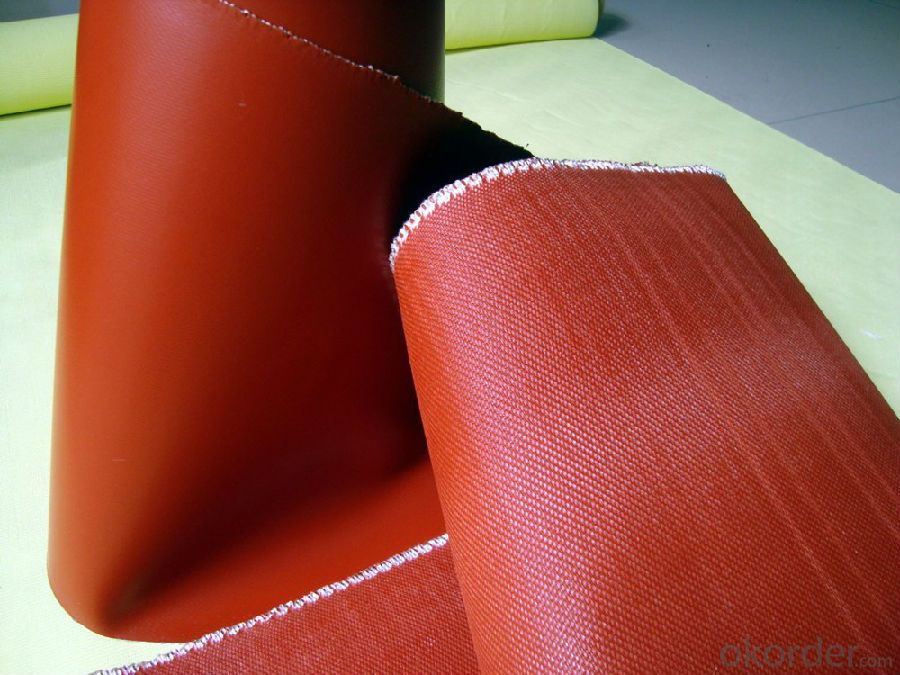
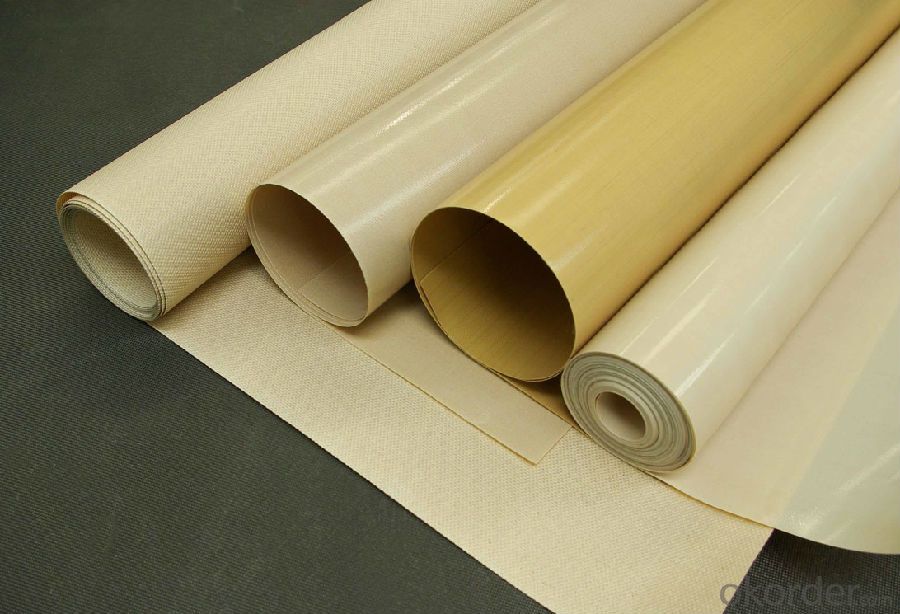
FAQ
1.What are the characteristics of fiberglass fabric?
a)Outstanding temperature resistance(from -70°C to +260°C)
b)Excellent chemical resistance
c)Superior non-stick surface, easy to clean
d)High dielectric strength
e)Dimensional stability
f)Resistance to UV, IR and HF
g)Non-toxic
2.How many methods to weave the fabric?
Four methods to weave the fabric:
a).Plain weave: it can be used in electricity insulation materials and reinforced materials in industry, because of inseparable structure, plain and clear lines.
b).Twill weave: compared with plain weave, it is of high density, high intensity, with a soft and loose structural weave. It can be used in ordinary reinforced materials, filter materials, and painting cloth.
c) Satin weave: compared with plain weave and twill weave, it is of high density,high intensity, with a soft and loose structural weave with a good texture. It is applicable for use as a higher reinforced material in machinery.
d).Gauze weave: said lattice twist weave. It can be used in spread model curtain,resin reinforced emery wheel gray cloth and lattice embed belt.
3.Can you offer us some samples?
We are willing to offer our customers best product&service,if it's necessary we can send
you sample for test;also we welcome all you customer have a trial order.
- Q: Can fiberglass fabric be used for making insulation tape?
- Insulation tape can indeed be made using fiberglass fabric. This fabric is renowned for its exceptional thermal insulation capabilities, thanks to its composition of woven glass fibers that can withstand high temperatures. These fabric tapes find widespread application across industries like electrical, automotive, and aerospace, serving to insulate and safeguard wires, cables, and pipes from heat and electrical currents. Typically, the fiberglass fabric is coated with a heat-resistant adhesive, enabling it to stick to different surfaces and establish a reliable insulation barrier. In conclusion, fiberglass fabric proves to be an appropriate option for manufacturing insulation tape due to its resistance to heat, durability, and versatility.
- Q: Large screen whole electric lift screen, PVC good or glass fiber?
- Look at the specific quality, glass fiber and PVC soft cloth are graded.
- Q: Can fiberglass fabric be used for making filters for air purifiers?
- Yes, fiberglass fabric can be used for making filters for air purifiers. Fiberglass is a commonly used material in air filtration due to its high efficiency in capturing small particles and its durability. It can effectively trap dust, pollen, and other airborne contaminants, making it suitable for air purification purposes.
- Q: What are the differences between Geogrid, glass fiber network and geotextile?
- Glass fiber mesh used in exterior wall, interior wall paint, mainly to prevent cracking, different materials at the junction of mortar plastering material hollowing. Local node reinforcement will also be used.
- Q: What is waterproof, one cloth, four coated?
- The operation includes the steps of: primary processing - additional waterproof glue brush again, dry brush second times, glue, and laying a layer of glass cloth after work, brush third times rubber - dry, brush fourth times rubber - water test.
- Q: Can fiberglass fabric be used for reinforcement in sports equipment?
- Yes, fiberglass fabric can be used for reinforcement in sports equipment. Fiberglass fabric is known for its high strength-to-weight ratio, making it an ideal material for reinforcing various sports equipment such as skis, snowboards, surfboards, and even tennis rackets. The fiberglass fabric is typically combined with a resin matrix to create a strong and durable composite material that can withstand the high stress and impact experienced during sports activities. Additionally, fiberglass fabric can also provide flexibility and enhance the overall performance of the equipment by improving its torsional and bending properties. Therefore, fiberglass fabric is commonly used as a reinforcement material in sports equipment to enhance their strength, durability, and performance.
- Q: Can fiberglass fabrics be used for upholstery or furniture applications?
- Yes, fiberglass fabrics can be used for upholstery or furniture applications. They are known for their durability and resistance to wear and tear, making them suitable for high-traffic areas. Additionally, fiberglass fabrics offer a sleek and modern aesthetic, making them a popular choice for contemporary furniture designs.
- Q: Can fiberglass fabric be used for seals?
- Yes, fiberglass fabric can be used for seals.
- Q: What are the different widths available for fiberglass fabric rolls?
- Different applications and preferences are accommodated by various widths of fiberglass fabric rolls. The manufacturer determines the available widths, which can differ, but some common choices are 1 inch, 2 inches, 3 inches, 4 inches, 6 inches, 12 inches, and 24 inches. These widths are intended to provide flexibility and versatility for a wide range of projects, ranging from minor repairs and patching to more extensive undertakings like boat construction or automotive repairs. To ascertain the precise widths offered for fiberglass fabric rolls, it is imperative to consult the particular supplier or manufacturer, as they may provide additional or customized choices to suit specific requirements.
- Q: What type of needle is used for sewing fiberglass fabric?
- A heavy-duty needle is the common type used for sewing fiberglass fabric. Its design is specifically made to endure the abrasive nature of fiberglass, featuring a sharp point and a thick shaft to penetrate the dense fibers of the fabric. Manufacturers typically construct it using robust materials such as stainless steel or titanium, guaranteeing its resistance to breakage or bending during the sewing process. Moreover, some sewers may opt for a needle coated with Teflon to minimize friction and prevent the fiberglass fabric from adhering to the needle. In summary, the use of a heavy-duty needle is vital when sewing fiberglass fabric to ensure successful stitching through the resilient fibers without causing any harm or breakage.
Send your message to us
Fiberglass Fabric with Silicone Coated 130gsm
- Loading Port:
- Shanghai
- Payment Terms:
- TT OR LC
- Min Order Qty:
- 500 m²
- Supply Capability:
- 50000 m²/month
OKorder Service Pledge
OKorder Financial Service
Similar products
Hot products
Hot Searches
Related keywords


